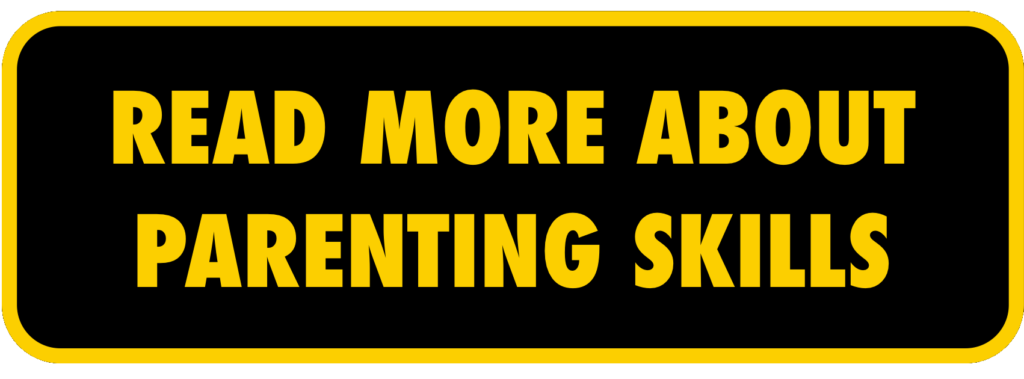Choosing Healthy, Appropriate Consequences
In our last Parent Skills blog post, we went over the differences between discipline and punishment & we presented our 3-step method for helping your child develop self discipline – CONNECT, REVIEW, REPAIR. Click HERE to read the post.
In this blog post, we will pick up where we left off. Both punishment and discipline involve consequences. An important difference is that with discipline, the consequences are specifically aligned with teaching the child about morality, as opposed to simply conditioning the child to associate that behavior with something scary or painful. In this way, the consequences are more goal-oriented instead of pain-oriented.
When Is It Appropriate To Introduce Consequences?
Many times, introducing a specific consequence isn’t necessary. The CONNECT-REVIEW-REPAIR conversation you have with your child is often enough to get the message across.
However, sometimes the conversation itself won’t be enough. Sometimes, even after you have this conversation, your child might still intentionally disobey the ground rules. This is when giving your child an appropriate consequence can be an excellent back-up strategy.
What Types of Consequences Are Unhealthy?
Consequences That Do Not Match The Behavior
Taking away something your child particularly loves, such as their phone or TV privileges, has been a standard consequence for generations. Common wisdom says that this will motivate the child to behave better in order to get those privileges restored.
But will it?
Here are two different scenarios in which the parent took away their child’s phone privileges as a consequence. See if you can determine which one is the healthier, more effective discipline option.
SCENARIO 1
Jane is in 5th grade, and she has always been an excellent student. This year, her social life really picked up, so she spends a lot of time on social media or texting with her new friends. At the beginning of the year, her parents were concerned that she was spending too much time on the phone instead of on her schoolwork, so they made the effort to have the CONNECT-REVIEW-REPAIR conversation with her. Since then, whenever they ask Jane about her homework at dinner time, she always tells them that she finished it already. Her parents are happy to know that Jane is on the right track, so they allow her to play on her phone during her free time in the evenings.
Then, at the end of the quarter, her parents were shocked to see that Jane had received Cs in many of her classes, and even a D in Science, which was her best subject last year! They were shocked, and they asked to have a parent-teacher conference immediately. At the conference, the teacher informed them that Jane’s grades were so poor because she wasn’t turning in her homework. When she did complete her homework, which was rare, her work was sloppy and only half-complete. Furthermore, the teacher caught Jane texting with her friends several times in the middle of class and sometimes had to confiscate her phone.
That evening, Jane’s parents sat her down and had another CONNECT-REVIEW-REPAIR conversation with her, this time not just about her schoolwork and her phone, but also about lying about what was really going on. This time, they also implemented the consequence of taking her phone away for a week so that she could focus on getting her grades back up. After the week was over, her phone privileges would be limited until her parents felt that trust was rebuilt between them.
SCENARIO 2
Jimmy is also in 5th grade, and he is also a good student. He spends a good amount of time on his phone, but he mainly uses it to FaceTime with his best friend who recently moved to Australia. They were inseparable before, and his parents know that the separation has been tough on both of them. After all, it’s the first year that Jimmy has gone to school and not had his best friend in class with him.
One day, Jimmy’s parents get a call from the school saying that Jimmy was being sent home because he was in a fight at school. His parents were outraged! Jimmy had never been violent before! What had gotten into him?
As soon as they got Jimmy home, they immediately took his phone away and told him to stay in his room until he was ready to call the boy that he fought with and apologize. He would be grounded for a week with no phone, no TV, and no internet. If he wants to enjoy these privileges again, he’ll have to learn to not use violence to solve his problems!
In which scenario does the consequence fit the crime?
If you answered Scenario 1, give yourself a high 5! In Scenario 1, the phone was a big reason for her failing performance at school and she was lying to her parents about it. Losing phone privileges doesn’t simply provide a pain point for Jane to avoid in the future; it directly relates to the poor behavior and helps Jane understand not only what she did wrong, but how she can make it better now. In Scenario 2, the phone had nothing to do with the fight he got in at school, so it was not an appropriate consequence.
Pain infliction based on taking away something the child likes, like in Scenario 2, may seem like a good move, but if it is unclear to the child how their behavior connects to that particular consequence, then this lack of a deeper understanding can cause even more misbehavior in the future. Furthermore, it could even seem random to the child, and this has the potential to instill long-term damage in your child’s trust for you.
Consequences That Take Healthy or Positive Things Away
In Scenario 2, Jimmy’s parents do not provide him with a healthy outlet for expressing his emotions around this experience. Maybe he was attacked & was defending himself? Maybe he was protecting another child? His parents didn’t ask Jimmy about his experience, and they immediately cut him off from talking to them about it by making him stay in his room. Furthermore, they cut off his access to the one friend whom he might be able to process the experience with – his best friend in Australia – by taking his phone away. In this scenario, taking his phone away is not a healthy or appropriate consequence because it is taking away a positive outlet for his emotions and limiting his access to the healthy relationships in his life.
Sometimes we hear about parents taking Krav Junior classes away from their child as a consequence for an unrelated misbehavior. Although parents may think this is a good move because it’s an activity the child likes a lot & the pain of missing it could teach the child a lesson, it actually leads to the opposite result. Taking Krav Junior classes away limits the child’s access to healthy activities that reinforce good behavior, such as discipline, confidence, fitness, positive social interaction, and more. Taking this away as a consequence isn’t going to help anyone reach their goals of better behavior. Not the child, and not the parents.
Consequences That Lower Morale
Any consequence that leads to your child having lower self confidence is never a good option. For example, taking away a student’s belt as a consequence only results in shaming the child, which decreases self esteem. Public humiliation leaves a permanent footprint in the child’s brain – a very negative one. For every negative footprint left, self esteem and morale decrease. The more children lack self confidence and self esteem, the lesser chance you have of them believing in themselves to make proper behavior choices.
How Can We Ensure The Consequence Match the Behavior?
After having the initial CONNECT-REVIEW-REPAIR conversation with your child, work together to map out a productive strategy that includes pre-determined consequences for misbehavior and rewards for good behavior. Keep these as relevant to the behavior as possible, but even if they seem a little bit random, the fact that you are preemptively strategizing with your child will already have the effect of your child making the connection between the action and the consequence or reward.
For example, you could make a chart that has a square for each day of the week. At the top of the page, you would write down the desired behavior that you and your child agree upon. Be as specific as possible so that the child understands exactly what is required of them. Explain that at the end of each day, you will decide together if they earned a red mark (poor), yellow mark (mediocre), or green mark (good) for that day. Then, decide on an appropriate consequence for all red marks, a consequence for some yellow but no green marks, and a reward for all green marks. Be sure to discuss this with your child after each day so that they are constantly engaged in the learning process and understand how the consequence is connected to their behavior.
In short, here’s our advice for choosing healthy, appropriate consequences:
- Choose consequences that are relevant to the behavior to help your child understand the underlying lesson.
- Avoid taking away healthy, positive things in the child’s life as a consequence for misbehavior.
- Choose consequences that do not negatively impact your child’s self confidence or self esteem.
- Collaborate with your child to find consequences and rewards that are appropriate for the behavior.
We hope you find this post helps to shed some positive light on how you can use consequences to help your child learn good behavior!
Source: SKILLZ


Comments are closed.